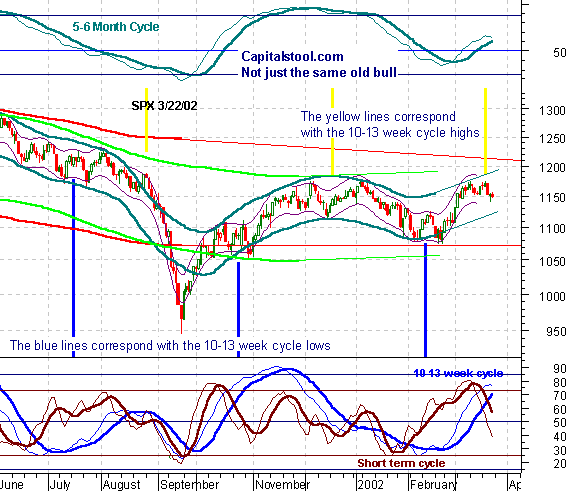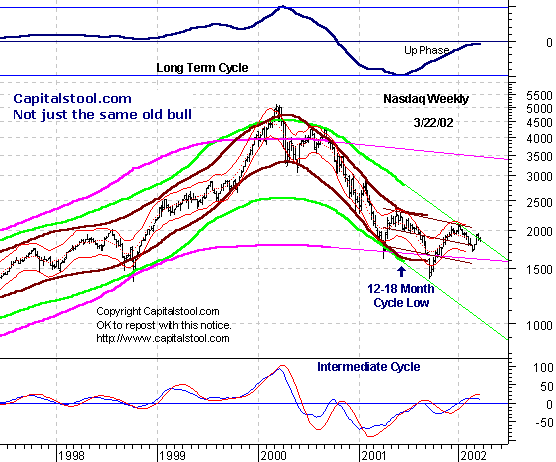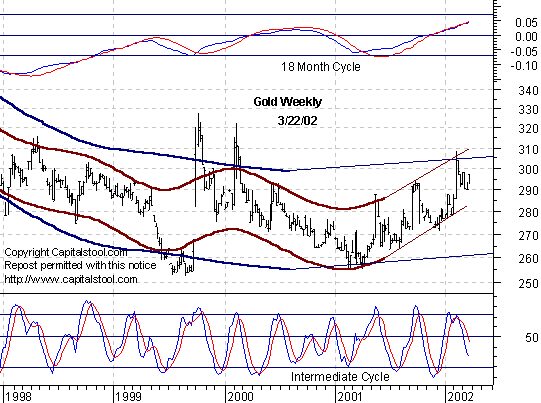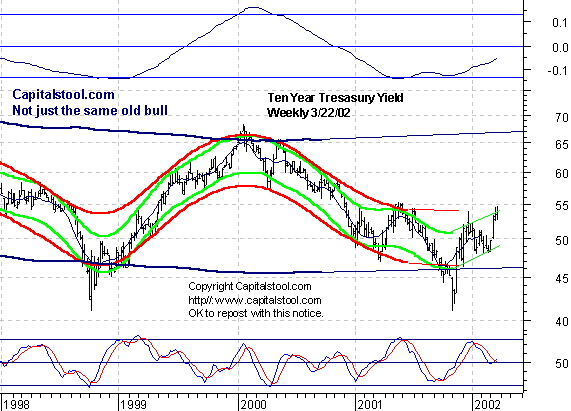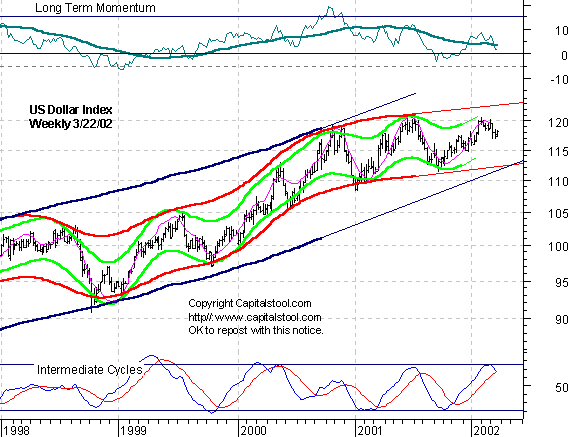|
[paid/menu.htm]
10 Minute Bar Charts 3/22/02 Dow Jokes Inflatables
Archives 12/30/01, 1/1/02, 1/2/02, 1/3/02, 1/4/02, 1/7/02, 1/8/02, 1/09/02, 1/10/02, 1/11/02, 1/14/02, 1/15/02, 1/16/02, 1/17/02, 1/18/02, 1/22/02, 1/23/02, 1/24/02, 1/25/02, 1/28/02, 1/29/02, 1/30/02, 1/31/02, 2/1/02, 2/4/02, 2/5/02, 2/06/02, 2/7/02, 2/9/02, 2/11/02, 2/12/02, 2/13/02, 2/14/02, 2/16/02, 2/19/02, 2/20/02, 2/21/02, 2/23/02, 2/25/02, 2/26/02, 2/27/02, 2/28/02, 3/1/02, 3/04/02, 3/05/02, 3/06/02, 3/7/02, 3/10/02,3/11/02, 3/12/02, 3/13/02, 3/14/02, 3/15/02, 3/18/02, 3/19/02, 3/20/02, 3/21/02
|
The Anals of Stock ProctologyPublished 5 times
per week by the American Academy of Stock Proctology and Free trial access to the Anals will end on March 31, 2002. To access the Anals on or after April 1, you must subscribe. When you subscribe through Paypal, you will immediately receive a user name and password which will allow you to access the current issue. If you have previously sent a donation through Paypal, and you would like a complimentary subscription equivalent to the amount of your contribution, send an email to [email protected]. Include your name, your email address, and if possible the date of your contribution(s) through Paypal. Upon confirming your information, I will send you a user name and password. Allow 1 week for processing. By requesting and accepting a complimentary subscription, you are agreeing that you have read and agreed to the Terms and Conditions, which basically says that you can't sue Dr. Stool, or Capitalstool.com, or its owner, no matter what! (If you emailed me this week, thank you! I will send your user name and password this weekend.) Finally, if you prefer not to use on-line payment, you can subscribe by mail. The annual subscription rate for payment by check is $99.00. Print the subscription form at the bottom of the Terms and Conditions and mail it in to the address on the form, with your check, of course. I will email you a user name and password. Allow 2 weeks for processing payments by mail. Thank you for your support! Doc Stoolies- See Subscription Information Above! The market gave back a little on Friday. The Nasgap led the way, closing on its low. It will be interesting if we see the usual 20 point gap on Monday morning, this time to the downside. The signs are building that an intermediate top is in place. The 17 day rate of change indicator, a proxy for the 6-7 week trading cycle, has turned down on all major averages. The 29 day rate of change proxies for the big swing, 10-13 week cycle, are edging ever closer to similar downturns. This is all typical of a top building process. Options volatility indexes have reached rarely seen levels that have presaged big declines in the past. The "bull market" which all of Wall Street saw beginning right after the 9/11 collapse, is over. The buying orgy of early March was an exhaustion move. The next big cyclical leg of the long term secular bear market is approaching. Whether it starts next week, or in three weeks, doesn't matter. Wall Street's little bull is dead. Short term and intermediate momentum indicators on the Dow are getting in gear to the downside. They are foreshadowing several weeks of relative weakness in the short run. The initial downside centered moving average projection is 10,300. We'll see what happens from there. If the Dow gets there quickly, the downside objective will also adjust lower rapidly.
Money Matters The market is struggling with reduced Fed feeding and rising interest rates. The Fed's most recent data shows that it tried to respond to slow money growth by pumping. But as always, the bond market responded poorly, with inflation expectations building. Portfolio funds raised from bond selling are no longer feeding into stocks. The rotation game that kept the stock market aloft is over. Gold and gold stocks continue to strengthen, along with other commodities prices. And rising bond yields are beginning to suck money out of stocks. In the week ended 3/20, the Fed added about $3.5 billion in reserves through its open market operations. Over the next 15 days, $25 billion in government securities will be maturing, and $22 billion in repurchase agreements will come due. That means an average of over $23.5 billion per week will need to be rolled over to maintain the status quo. The chart of the adjusted monetary base shows data only through March 13, when growth had slowed to zero. Next week's data on the monetary base, which will reflect market actions through last Wednesday, should show an increase. It wasn't enough to help the markets much. The Fed was trying to liquefy just enough to stabilize the bond market without spooking it and overstoking the inflation that is starting to bubble up. The Fed is like the man on the tightrope in high winds. It's an impossible balancing act. Remember Karl Wallenda?
The data for M1 is
through March 11. It shows sharply slowing money growth, and is the reason
why the Fed kicked it up a notch last week. They risk a monetary implosion
as the credit bubble begins to deflate. So when things start to go
negative, they pump. But they don't have control. The markets have
control. The Fed is reacting as always. But now, with inflationary
pressures on the build, the more they pump, the worse things will get. And
the markets will burn it just as fast as the Fed can pump it. The M3 data through March 11 reflects the beginnings of the decline in mortgage originations that has followed on the heels of rising interest rates. The refi boom has been the prime engine of the credit bubble that levitated the US financial system for the last two years. The Mortgage Bonkers Association announced a second straight sharp drop in mortgage apps for the week ended March 15. This will translate into even greater shrinkage in mortgage originations and broad money supply growth, 4 to 8 weeks from now. Without the credit bubble and the money growth it engenders, stocks are dead.
Portfolio Sphincters Index (SPX) Charts The VIX, a sentiment indicator based on options volatility, closed at 19.62, the lowest level since August 31, 2000. The SPX dropped 15% in the 6 weeks following that reading. However, that was after the VIX stayed below 20 with market churning persisting for 2 weeks. The question is, can we rely on that precedent? The indicator has only "worked" for four years. Four years is not much history. Prior to that the VIX was consistently below 20, during the bubble. Price, and price based indicators are always the final
arbiter. We see negative divergences on the charts going back months. If
the market turns
down before the divergences
are resolved, these rallies have been nothing more distribution. That is
Wall Street's business, and they are masters of it. Resistance at 1175
held several times, and the 17 day rate of change turned down,
signaling a probable reversal. When the 28 day rate of change follows, a
downturn in the 10-13 week cycle will be confirmed, and the rout will be on. That
day is getting closer. Wall Street thinks that the market is in a bull market correction. The weekly chart of the SPX says otherwise. The secular trend is down, and all of the long term cycles are down. The extraordinary symmetry in this chart should not be ignored. The 26 week linear regression slope indicator is signaling that the big intermediate up wave is over.
Intermediate cycle indicators on the daily chart have flattened out at relatively low levels. A downturn from these levels would indicate severe weakness ahead. The 1 year cycle up phase has been under way since the September 2001 lows, and is now completing a second top. This is not a new up cycle. It is a mature one, and the February-March rally was an exhaustion blowoff. The top building process usually takes weeks. This one has been under way for 3 weeks. Time is now on the side of the bears.
The Cycle Conditions tables include cycle phase and a wild guess as to number of periods to the next turn, in days for the shortest cycles, weeks (W) or months (M) for the longer ones. This is a fluid exercise, in other words, the projections are likely to be wrong, but they force us to be vigilant for key turning points, and frequently work well enough to prevent costly misreadings of the market. SPX Cycle Conditions as of 3/22/02
PTT - Periods Till Turn Nasgap Charts The
six month cycle oscillator on the Nas remains weak in
negative territory, and precariously close to a sell signal. This indicates an extremely weak up phase,
and it will be a precursor to complete collapse if the indicator turns
down without further improvement from here. Here's a long term chart of the bull market that everyone on Wall Street said began in December. Funny thing. I can't see it. I see a market making a double touch of a major descending downtrend channel, as it tops out a cycle up phase that began last spring. The real test may be whether the lower secular trend channel at 1600 will hold.
Nasdaq Cycle Conditions as of 3/22/02
PTT
- Periods Till Turn Golden Stool The weekly gold chart shows an uptrend that is intact, is consolidating nicely, and getting ready to blow through the roof.
The weekly chart of the Ten Year Bond Yield shows it ready to come out of an enormous base, with yields heading for at least 6.75% over the next couple of months. That alone should bring the PE on the SPX down to 15.
Looking at a long term chart, poor Uncle Buck sure looks tired. As a matter of fact, he looks like he's about to drop dead. Talk about the Dollar on the Stool Pigeons Wire.
See you in Intraday Stool. Dr. Stepan N. Stool Let us know what you think on the Stool Pigeons Wire. |
![[Most Recent XAU from www.kitco.com]](http://www.weblinks247.com/indexes/idx24_nasdaq_en_2.gif)
![[Most Recent XAU from www.kitco.com]](http://www.weblinks247.com/indexes/idx24_sp500_en_2.gif)
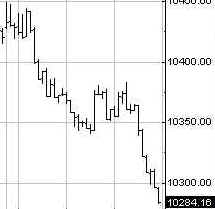
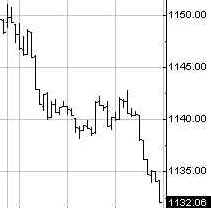
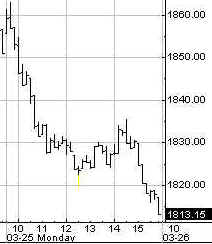

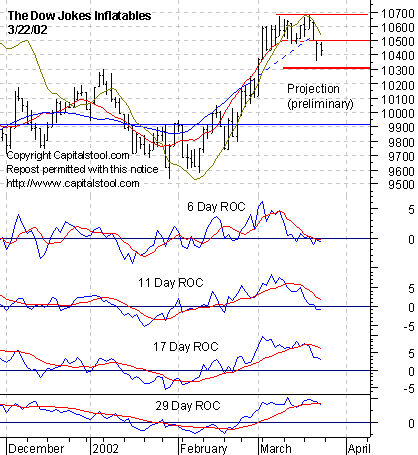

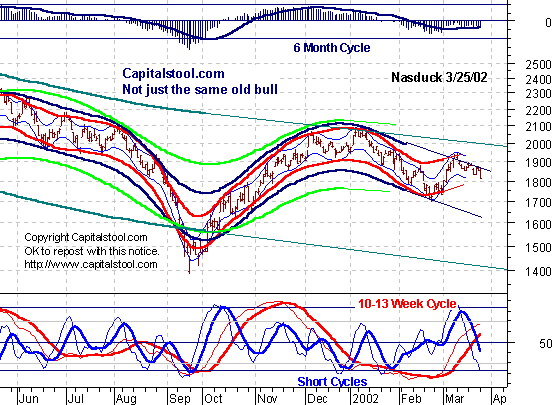
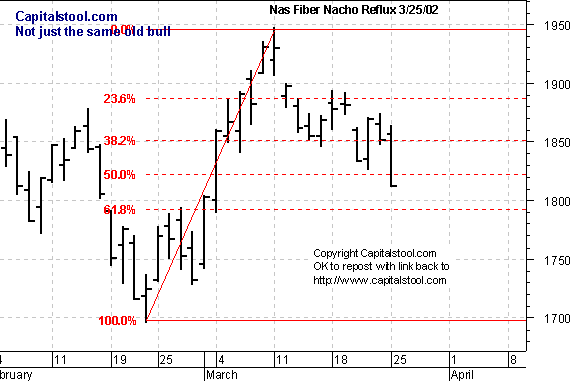
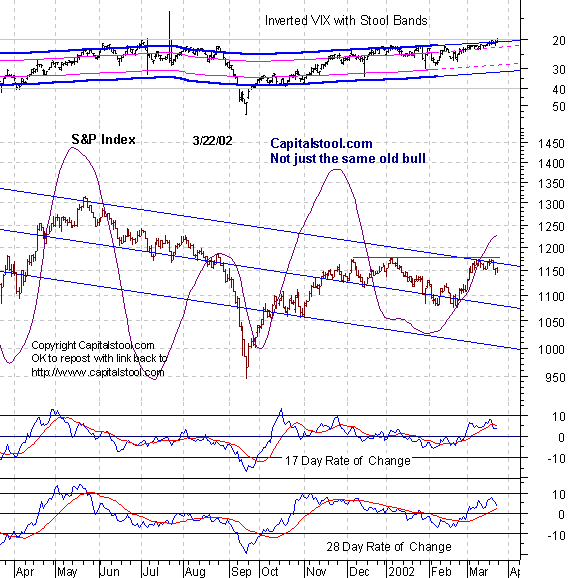
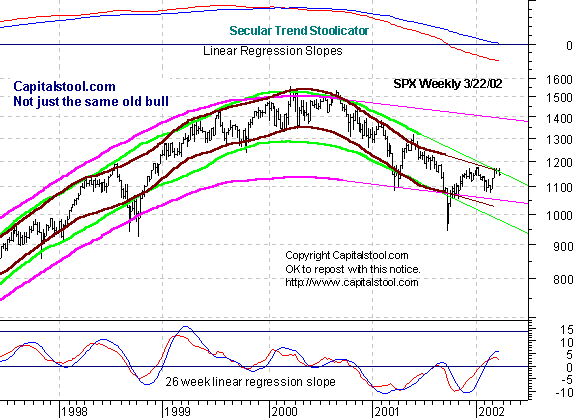
 Chart Powered by METASTOCK
Chart Powered by METASTOCK